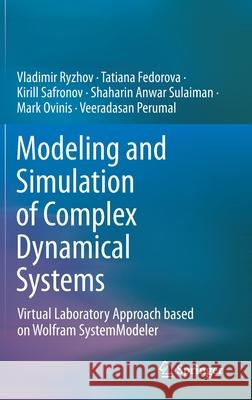Modeling and Simulation of Complex Dynamical Systems: Virtual Laboratory Approach Based on Wolfram Systemmodeler » książka
topmenu
Modeling and Simulation of Complex Dynamical Systems: Virtual Laboratory Approach Based on Wolfram Systemmodeler
ISBN-13: 9789811630521 / Angielski / Twarda / 2021 / 168 str.
Modeling and Simulation of Complex Dynamical Systems: Virtual Laboratory Approach Based on Wolfram Systemmodeler
ISBN-13: 9789811630521 / Angielski / Twarda / 2021 / 168 str.
cena 201,72
(netto: 192,11 VAT: 5%)
Najniższa cena z 30 dni: 192,74
(netto: 192,11 VAT: 5%)
Najniższa cena z 30 dni: 192,74
Termin realizacji zamówienia:
ok. 22 dni roboczych
Dostawa w 2026 r.
ok. 22 dni roboczych
Dostawa w 2026 r.
Darmowa dostawa!
Kategorie BISAC:
Wydawca:
Springer
Język:
Angielski
ISBN-13:
9789811630521
Rok wydania:
2021
Wydanie:
2021
Ilość stron:
168
Waga:
0.43 kg
Wymiary:
23.39 x 15.6 x 1.27
Oprawa:
Twarda
Wolumenów:
01
Dodatkowe informacje:
Wydanie ilustrowane











